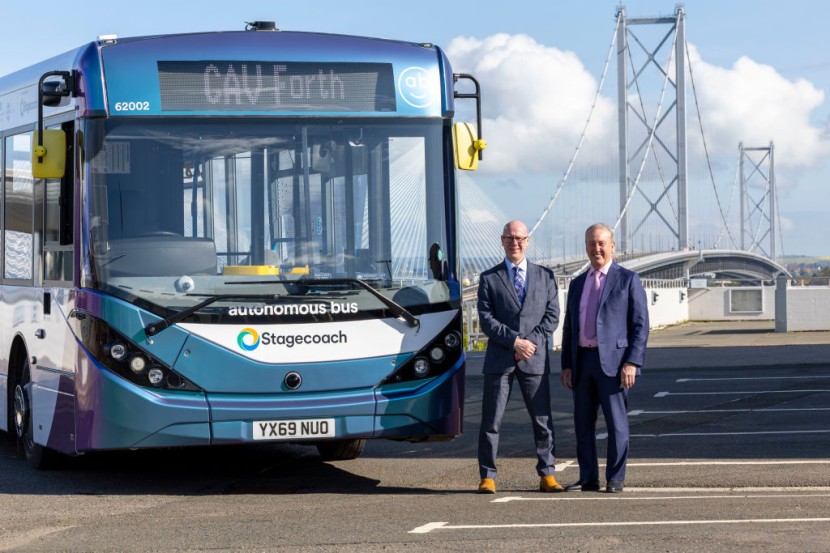Edinburgh has introduced autonomous buses that will carry real passengers on a real route, making it the first of its kind. However, the buses will not be completely driverless as they will have two staff members on board, which is double the number of staff required for a traditional bus in the city.
This courageous move towards enhancing the future of public transportation is still in the experimental stage and is a trial that will take several years. Its main purpose is to test new technology and reassure the public, as reported by NBC News.
The company installed self-driving technology in five Alexander Dennis Enviro200AV vehicles. However, people may have initially considered Scotland's self-driving buses an impractical and unnecessary novelty.
The Need for a Human Driver Still
During a recent demonstration, the driver of a bus in Edinburgh drove it normally until he approached a specific spot on the Forth Road Bridge. At this point, a "ding" sound notified passengers that the driver, Steven Matthew, had activated the autopilot system.
He cautiously lifted his hands off the steering wheel but remained alert and prepared to take over driving the bus if needed, as a computer was controlling the vehicle.
Matthew felt safe driving the bus, even though he trusted the technology. As the bus sped across the large bridge, his presence behind the wheel gave him a sense of comfort. Experts suggest that having a driver like Matthew is important because they can act as a safety net for the technology in case human drivers or pedestrians make mistakes.
Read also: Volkswagen Aiming To Produce 30 New Electric Car Models By 2025
Reducing Human Errors
The aim of implementing technology in buses is to minimize mistakes made by humans, which would result in fewer accidents and fatalities on the roads. In addition, the use of technology would decrease the dependency on human drivers, reducing expenses and making bus services more affordable for smaller towns and cities that currently cannot provide public transportation.

Every bus has around 20 sensors, cameras, radars, and a highly advanced global positioning system connected to satellites. A bus will travel a 14-mile route every half an hour that involves challenging traffic situations such as roundabouts, traffic lights, and changing lanes on the motorway.
With the increasing demand for public transportation, it has become crucial to implement advanced technologies in buses. These modern systems improve safety and enhance the passenger experience by providing real-time information about bus schedules and routes.
The use of artificial intelligence (AI) in buses is becoming more prevalent as it enables vehicles to make quick decisions based on data analysis. AI-powered sensors can detect obstacles or pedestrians ahead and alert the driver accordingly, preventing accidents from occurring.
Moreover, these new technological advancements are environmentally friendly too. Electric-powered engines can significantly reduce carbon emissions compared to traditional diesel-fueled ones. This helps create a cleaner environment and reduces air pollution levels leading to respiratory illnesses like asthma.
Technology continues to revolutionize every aspect of our lives, including transportation services like buses. With enhanced features focused on improving safety measures while reducing costs at the same time - there's no doubt that this will continue changing how we move around cities forever!
Related article: Greece: Driverless Buses Now Being Tested In Actual Road Conditions (VIDEO)
© 2025 HNGN, All rights reserved. Do not reproduce without permission.








